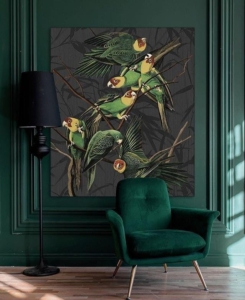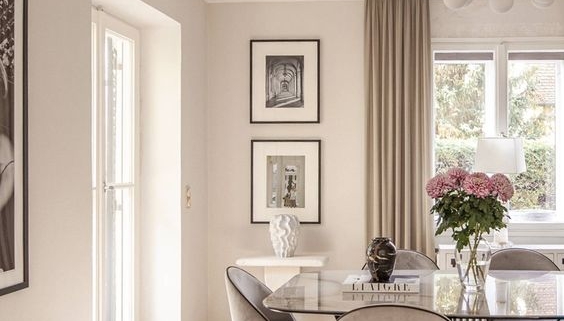Finding Harmony in Design: Minimalism vs. Maximalism In Interiors
In the world of interior design, two contrasting styles have gained immense popularity over the years: minimalism and maximalism. These design philosophies offer unique aesthetics and cater to different personalities and lifestyles. In this blog, we will explore the characteristics of each style, provide examples of when to use them, and help you decide which one suits your preferences.
Minimalism: Less is More
Minimalism is a design ethos rooted in simplicity, functionality, and a “less is more” approach. This style is characterized by clean lines, a neutral colour palette, and a focus on essential elements. Minimalist interiors are uncluttered, and serene, and often feature open spaces.
When to Use Minimalism:
Small Spaces: In compact apartments or tiny homes, minimalism can maximize space by eliminating unnecessary clutter and using multifunctional furniture.
Calming Retreats: Minimalist design is ideal for creating tranquil and stress-free environments, such as bedrooms and bathrooms, where simplicity promotes relaxation.
Busy Lifestyles: Individuals with busy schedules may appreciate minimalism’s efficiency, as cleaning and maintenance requires less time and effort.
Who Should Opt for Minimalism:
Those Seeking Simplicity: If you prefer a clean, uncluttered living space that promotes tranquillity and mindfulness, minimalism is for you.
Individuals with Few Possessions: Minimalism aligns with those who don’t have a vast collection of belongings and enjoy a more streamlined lifestyle.
Allergy Sufferers: Fewer items mean less dust and allergens, making minimalist spaces suitable for those with allergies.
Maximalism: Embrace the Extravagance
On the opposite end of the spectrum, maximalism celebrates abundance, vibrant colours, and an eclectic mix of patterns and textures. It’s a design style that encourages self-expression, creativity, and a fearless approach to decor.
 When to Use Maximalism:
When to Use Maximalism:
Boring Spaces: Maximalism can breathe life into dull rooms, transforming them into vibrant and exciting areas that demand attention.
Art Lovers: If you have a diverse art collection or love displaying various artworks, maximalism can create an engaging backdrop for your pieces.
Personality Showcase: Maximalism allows you to showcase your unique personality, interests, and history through an array of objects and decor items.
Who Should Opt for Maximalism:
Creative Souls: Maximalism is a haven for creative individuals who thrive in spaces filled with inspiration and visual stimulation.
Sentimental Collectors: If you cherish an array of sentimental items and memorabilia, maximalism provides a stage for displaying your treasures.
Fearless Design Enthusiasts: Maximalism is for those who aren’t afraid to experiment with color, pattern, and texture to create bold and eye-catching interiors.
Finding Balance
While minimalist and maximalist interiors represent opposite ends of the design spectrum, it’s important to note that you don’t have to commit entirely to one style. Many homeowners find harmony in blending elements of both styles to create a unique and balanced aesthetic.
Balanced Interiors:
Hybrid Approach: Combining minimalist principles in larger spaces and maximalist elements in smaller nooks can strike a balance that suits various areas of your home.
Seasonal Shifts: Consider changing your interior decor seasonally. Opt for minimalism during the winter for a cosy atmosphere and embrace maximalism in the summer for a vibrant, energetic feel.
In conclusion, the choice between minimalism and maximalism in interior design ultimately depends on your personal preferences, lifestyle, and the specific spaces you want to transform. While minimalism offers simplicity and serenity, maximalism celebrates extravagance and self-expression. Whether you lean towards one style or find beauty in the blend of both, your home should reflect your unique personality and needs. Embrace the power of design to create spaces that resonate with you and bring joy to your life.

